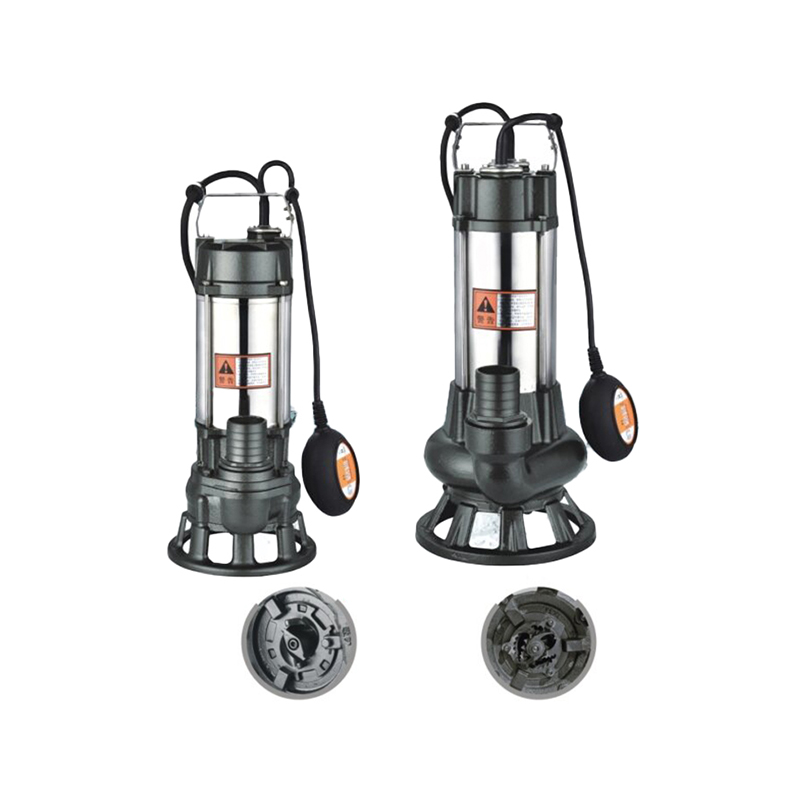QDX/B Stainless Steel Submersible Pump for Building and Industrial Drainage
The Stainless Steel Submersible Pump for Building and Industrial Drain...

When it comes to wastewater management, whether for residential or industrial use, selecting the right sewage pump is essential to ensure effective operation and long-lasting performance. Sewage pumps are designed to handle the removal of effluent, sewage, and wastewater from homes or industrial sites, and the type of pump you select will depend on various factors such as flow rate, head pressure, and the nature of the wastewater.
The three primary types of sewage pumps commonly used in residential and industrial settings are Submersible Sewage Ejector Pumps, Submersible Effluent Sewage Pumps, and High Head Submersible Sewage Pumps. Each of these has distinct features that make them suitable for different applications.
A Submersible Sewage Ejector Pump is often used in residential settings to move wastewater from basements or homes where gravity alone is insufficient to transport the effluent to the main sewage line. These pumps are designed to be fully submerged in the wastewater, which helps prevent clogging and keeps the motor cool during operation. The ejector pump uses a mechanical method to eject solids, making it ideal for residential applications where the wastewater may contain human waste and debris. When selecting this pump, it's important to consider the size and capacity of the pump to ensure it can handle the peak wastewater flow and solid content of the system.
The Submersible Effluent Sewage Pump, on the other hand, is commonly used in septic systems or for discharging treated effluent. Unlike sewage ejector pumps, effluent pumps typically handle wastewater that is free of large solids. These pumps are also submerged and are designed for continuous operation, moving liquid waste efficiently from a septic tank to a drain field or other treatment system. These pumps tend to have a smaller impeller and are built for higher efficiency over long durations, as they work to transport clear liquids or effluent. When choosing this type of pump, you must consider the required flow rate, the pumping distance, and the required lift to ensure the effluent is directed correctly.
In industrial settings, where wastewater may contain larger solids or where the system requires a higher lift, a High Head Submersible Sewage Pump is often used. This type of pump is capable of handling more difficult pumping applications, especially in deep-well configurations or where wastewater must be lifted to a higher elevation. The high head pump is equipped with a powerful motor and an impeller that enables it to handle more substantial solids and lift the wastewater to significant heights. In these cases, you will need to assess the head pressure, the solids content of the wastewater, and the pump's durability to ensure it can manage the heavy-duty demands of industrial wastewater systems.
The key to selecting the right sewage pump is to understand the unique requirements of your system. For residential applications, a Submersible Sewage Ejector Pump or a Submersible Effluent Sewage Pump may suffice, depending on whether you are dealing with raw sewage or treated effluent. For industrial applications, however, a High Head Submersible Sewage Pump may be necessary due to the higher volume and more complex characteristics of the wastewater. Other factors to consider include the pump's power source, whether it operates on electricity or solar power, as well as its maintenance requirements.
Selecting the right sewage pump for wastewater management is critical for ensuring smooth and efficient operation in both residential and industrial settings. By understanding the differences between Submersible Sewage Ejector Pumps, Submersible Effluent Sewage Pumps, and High Head Submersible Sewage Pumps, you can make a more informed decision based on your specific needs. Whether you are managing household wastewater or dealing with industrial effluent, choosing the correct pump will ensure effective and reliable wastewater management over time.